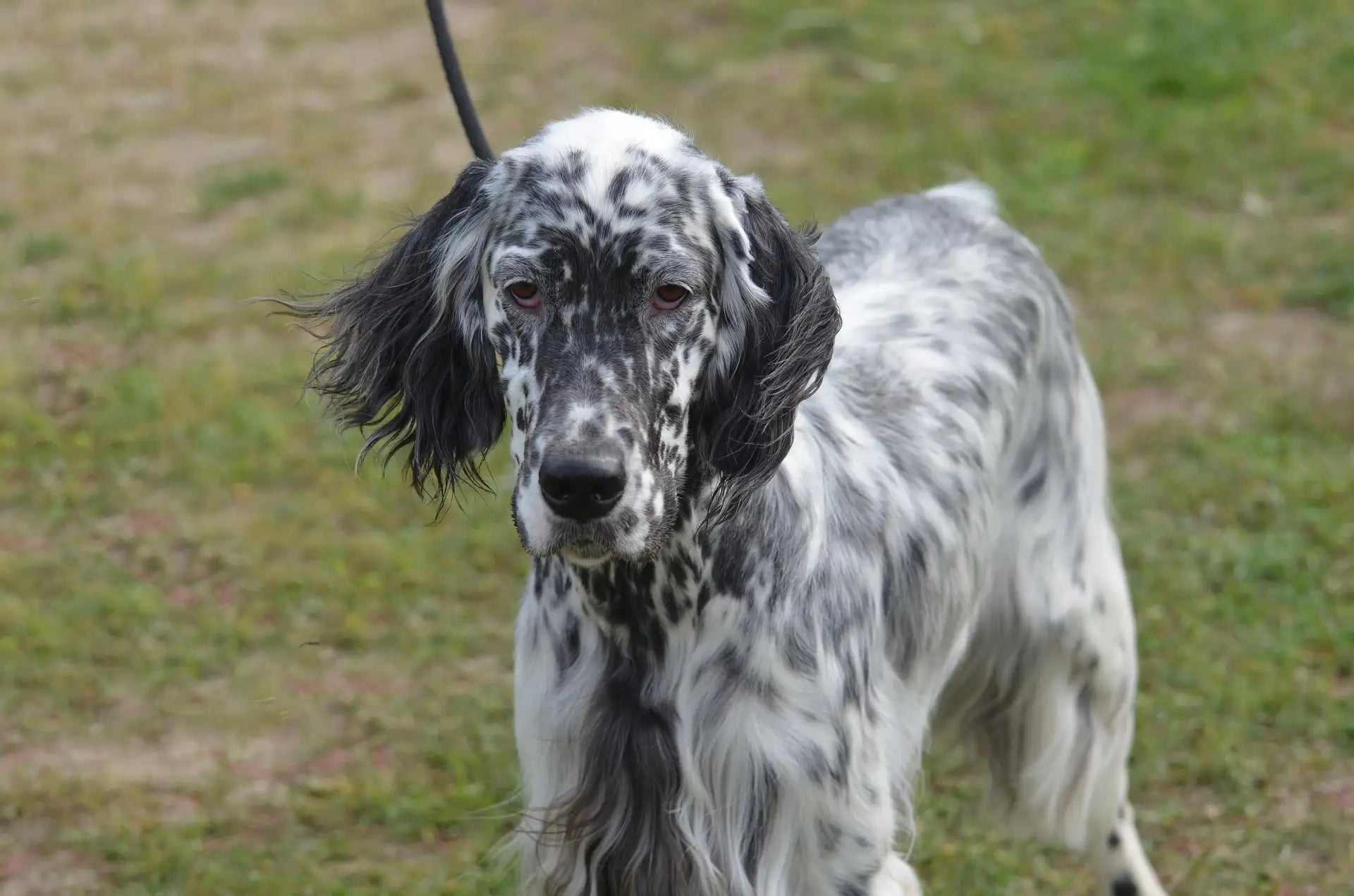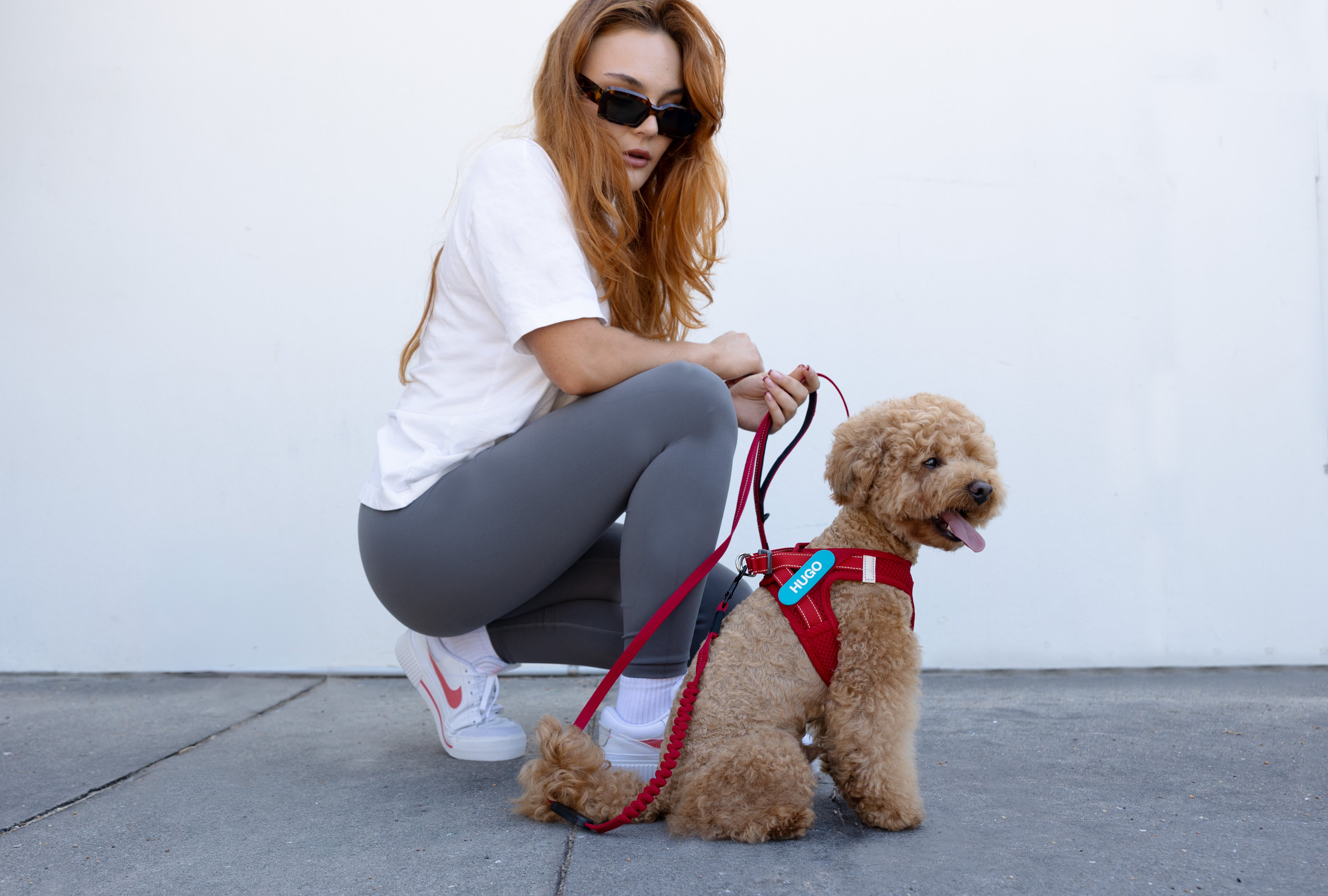
English Setter Dog Breed: Temperament, Care, Training Guide & More!
Elegant, affectionate, and always up for a good run, the English Setter is a stunning gun dog that thrives on companionship and activity.
Known for their feathered coat and gentle personality, these dogs bring grace and playfulness to any home willing to meet their needs.
Quick Facts Overview
|
Trait |
Details |
|
Size Category |
Medium to Large |
|
Height & Weight |
Height: 61–69 cm; Weight: 20–36 kg |
|
Coat Type & Colours |
Long, flat, feathered coat; blue belton, orange belton, tricolour, lemon belton |
|
Energy Level |
High |
|
Origin |
England |
|
Grooming Needs |
Moderate to High |
|
Temperament |
Gentle, friendly, alert, affectionate |
|
Trainability |
High |
|
Compatibility |
Great for active families, kids, and multi-dog homes |
|
Lifespan |
10–12 years |
Breed Origins and History
-
Developed in England over 400 years ago.
-
Originally bred as a bird dog, specialised in locating and "setting" game birds.
-
Crossed from Spaniels, Pointers, and early Setters.
-
Gained popularity as both a sporting and companion breed.
-
Recognised by kennel clubs in the late 1800s.
The English Setter was designed to be both athletic and elegant. With their remarkable scenting ability and calm disposition, they served as a dependable partner for hunters for generations.
Their role in the field required not only endurance and speed but also gentleness and a willingness to work cooperatively with their handler. Over time, their appeal broadened from the field to the home, where their affectionate nature and beauty gained them fans around the world.
Even today, they retain their heritage as both field dogs and cherished companions.
Personality and Temperament
Key Traits:
-
Gentle and loving
-
Very social with humans and dogs
-
Moderate guarding instincts
-
May be shy without early socialisation
English Setters are the epitome of soft-heartedness. They thrive in a family setting where they can be close to their humans throughout the day. Their gentle, affectionate manner makes them ideal for households with children and other pets.
Setters love to play but are rarely overbearing. They’re emotionally sensitive, meaning they respond well to encouragement and gentle handling.
Socialisation from an early age ensures they remain confident in new environments, which helps balance their naturally alert yet reserved disposition.
English Setters are famously good-natured and affectionate. They bond closely with their families and get along exceptionally well with other pets and children.
While not known as guard dogs, they will alert you to new visitors, usually with a friendly wag.
Trainability and Intelligence
Training Traits:
|
Trait |
Rating |
|
Obedience |
8/10 |
|
Focus |
7/10 |
|
Responsiveness |
8/10 |
|
Social Learning |
9/10 |
Training an English Setter is generally a rewarding experience. They’re quick learners, particularly when given structure and praise. These dogs excel in environments where consistency is paired with patience.
They may be slow to mature mentally, so short, focused sessions are more effective than lengthy routines. Because they’re people-pleasers at heart, they do best with gentle reinforcement rather than firm correction.
Setters are also socially observant, often picking up behaviours by watching other dogs, which can be a plus in multi-dog households.
-
Respond best to positive reinforcement and food-motivated methods
-
Require patience and repetition—can be soft and sensitive
-
Thrive in structured environments with regular training routines
Recommended Gear:
Exercise and Activity Requirements
Daily Requirements:
-
60–90 minutes of physical activity
-
Field games, long walks, and off-leash play in secure areas
-
Mental games: hide and seek, nose work, trick training
English Setters have a lot of stamina and love to stay active. Their hunting background makes them naturally inclined to explore, chase, and sniff, so outdoor time is essential.
They’re best suited to owners who enjoy being outdoors themselves—think bushwalks, park play, or agility training. While they do enjoy downtime, they need a proper outlet for their physical and mental energy each day.
Without this, they can grow restless or develop habits like excessive barking or pacing.
Recommended Gear:
Physical Characteristics
-
Athletic and graceful
-
Long ears and a feathered tail
-
Distinctive Belton coat patterns
-
Soft expression and muscular build
English Setters carry themselves with an effortless elegance, combining athleticism with refinement. Their bodies are strong and balanced, allowing them to move smoothly whether they're sprinting across a field or lounging at home.
The long feathering on their tail, chest, and ears enhances their signature look and makes regular grooming essential.
One of the most eye-catching features of the breed is their belton coat—a beautiful ticking pattern that gives them a unique appearance. Their warm, expressive eyes further reflect their affectionate nature.
Recommended Gear by Size:
Living Environment Suitability
Ideal Conditions:
-
Homes with access to a backyard or open space
-
Not ideal for apartment living unless very active
-
Needs companionship and should not be left alone for long hours
These dogs are best suited to homes where they have space to roam and people to interact with throughout the day. They’re not fans of long stretches of solitude and may grow anxious or bored if left alone too often.
While they can adapt to apartment life with a committed and active owner, they flourish in larger spaces where they can stretch their legs. A secure backyard is perfect, especially if paired with a family that enjoys outdoor activities.
English Setters are very people-oriented and thrive when included in daily routines and adventures.
Recommended Gear:
Grooming and Maintenance
Grooming Checklist:
-
Brush 2–3 times weekly to avoid mats
-
Trim feathered areas (ears, legs, tail) as needed
-
Clean ears weekly, clip nails monthly
Their long, feathered coat is a thing of beauty—but it comes with responsibility. Regular brushing is a must to prevent mats and tangles, especially in their fringe areas.
A thorough grooming session two to three times a week keeps their coat clean, healthy, and show-ready. Special attention should be paid to their ears, which can trap moisture and become a site for infections. Professional grooming every couple of months can help maintain their coat’s shape and cleanliness, and don’t forget regular nail trims and dental care.
Recommended Grooming Gear:
Common Health Issues
Breed-Specific Concerns:
-
Hip dysplasia
-
Deafness (especially in white-coated individuals)
-
Hypothyroidism
-
Allergies and skin conditions
While generally healthy, English Setters can be prone to a few genetic conditions. Hip dysplasia is a common concern in medium to large breeds, and regular vet visits help catch early signs.
Deafness can affect some individuals, particularly those with a lot of white in their coat. Skin allergies and hypothyroidism may also occur, requiring dietary adjustments or medication.
With responsible breeding, regular health screenings, and attentive care, many of these issues can be managed or avoided altogether. Monitoring their weight and providing joint support as they age is always a wise approach.
Recommended Health Support Gear:
Diet and Feeding Guidelines
Feeding Schedule:
-
Puppies: 3 meals a day
-
Adults: 2 meals daily
-
High-quality kibble formulated for active, medium-large dogs
An active breed like the English Setter needs proper fuel to stay healthy and energetic. Feed them a balanced, age-appropriate diet that supports bone, joint, and coat health.
Choose a high-quality kibble formulated for medium to large dogs with moderate to high activity levels. Avoid overfeeding, as this breed can be prone to weight gain if under-exercised.
Some Setters may have food sensitivities, so monitor for skin or digestive issues and adjust their diet accordingly. Always provide fresh, clean water—especially after exercise or time spent outdoors.
Recommended Feeding Gear:
Compatibility with People and Other Pets
Compatibility Scale:
-
Children: ★★★★★
-
Other Dogs: ★★★★★
-
Strangers: ★★★★☆
Recommended Social Gear:
Behavioural Issues and Management
Common Issues:
-
Over-excitement
-
Pulling on walks
-
Separation anxiety
Solutions:
-
Use calming routines and daily structure
-
Practice loose-lead walking from an early age
-
Leave safe chew toys or puzzle feeders when alone
Recommended Gear:
Essential Gear for English Setters
Walking & Outdoor:
Style & ID:
Training:
Travel & Safety:
Climate & Seasonal:
Personalisation:
FAQs: English Setter Dog Breed
1. Is an English Setter a good family dog?
Yes, English Setters are gentle, affectionate, and great with children, making them excellent family dogs. They’re social and thrive on human interaction, often becoming attached to all members of the household.
2. Are English Setters good off-leash?
English Setters can be trained to be good off-leash, but they have a strong hunting instinct and may wander if not well-trained. A secure environment and strong recall commands are important before allowing them off-leash in open spaces.
3. Do English Setters bark a lot?
They are not excessive barkers, but they will bark to alert you or when they’re excited. With proper training and mental stimulation, barking is usually manageable and not a major issue.
4. Can English Setters be left alone?
English Setters prefer company and can become anxious if left alone for too long. They’re not ideal for households where they’ll be left for long stretches every day. If needed, gradual training and enrichment toys can help them cope better.
5. Are English Setters good for first-time owners?
Yes, they can be. English Setters are friendly and trainable, but they do require regular exercise and patience due to their energetic nature. First-time owners who are active and committed to training will find them rewarding companions.
6. What are the cons of an English Setter?
Some challenges include their high energy levels, need for regular exercise, and tendency to wander or follow scents. Their feathered coat also requires routine grooming to prevent tangles and matting.
7. How much exercise does an English Setter need?
English Setters need at least 1 to 2 hours of daily exercise. This can include walks, play sessions, or structured activities like agility or scent work. Without enough activity, they can become bored or restless.
8. Are English Setters cuddly?
Many English Setters enjoy close contact with their people and are affectionate without being overly clingy. While not lap dogs, they often enjoy lying next to you and being involved in whatever you’re doing.
9. Do English Setters have health issues?
They can be prone to conditions like hip dysplasia, deafness, and thyroid problems. Some lines may also have eye conditions. Responsible breeding and regular vet checkups are essential for maintaining their health.
10. Can English Setters live with cats?
Yes, if socialised properly from a young age, many English Setters can live peacefully with cats. Their gentle nature helps, but early introductions and supervision are key, especially given their background as hunting dogs.
Final Thoughts
The English Setter is a graceful and affectionate companion for families who enjoy an active lifestyle. With their loving nature and elegant look, they are as delightful to live with as they are to admire.
Looking for gear designed for elegant, energetic breeds like the English Setter?
Visit EzyDog for high-quality accessories that keep your dog safe, stylish, and comfortable every day.





Leave a comment
This site is protected by hCaptcha and the hCaptcha Privacy Policy and Terms of Service apply.